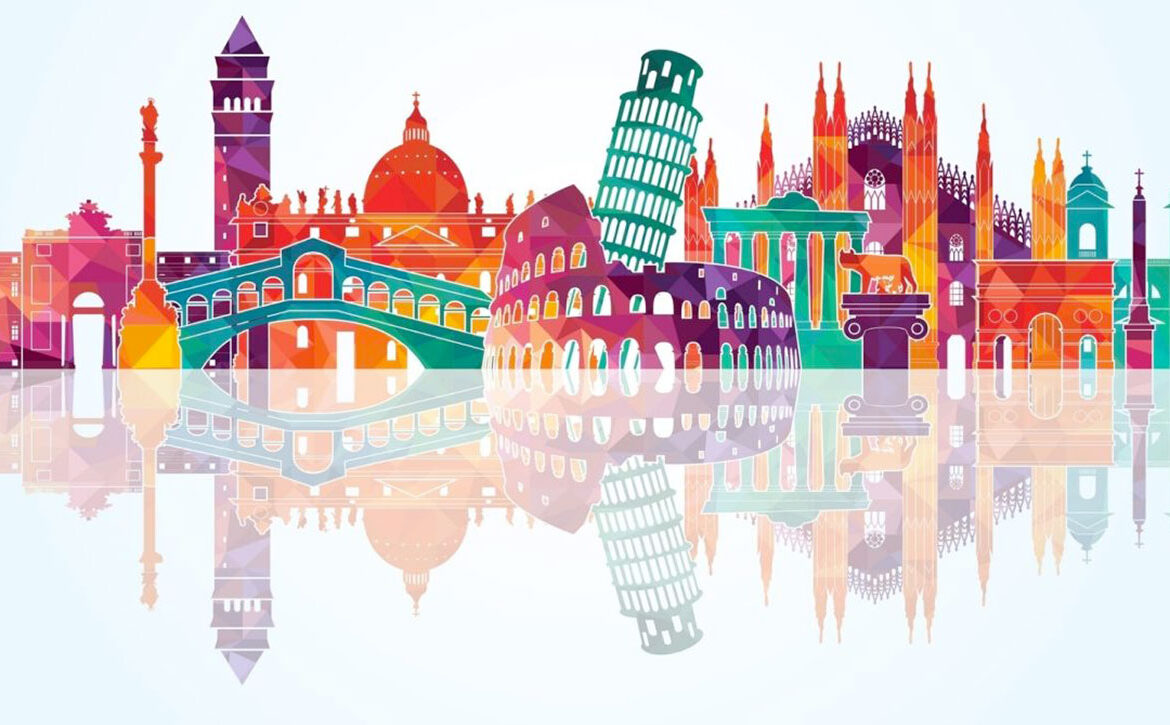The Italian language and dialects

The Italian linguistic heritage is one of the richest in Europe, its dialects include some belonging from the branch of Romance languages (which includes Italian, French and Spanish) but also some coming from Germanic, Greek and Slavic languages.
In the 13th century the dialect spoken in Florence, Tuscany – used by some of the greatest authors such as Dante, Petrarca and Boccaccio – became the national language as it managed to stand out from other dialects spoken in Italy.
Below a map of the Italian languages and dialects. According to the Unesco atlas in Italy there are 31 languages.

VENETIAN DIALECT
Origins
The Venetian dialect was born by the evolution of vulgar Latin. A characteristic of this dialect is the complete absence of grammar rules, so the written expression of the language was rather free and variable over time and according to who was writing. Progressively the Venetian dialect developed as a complete and autonomous language, with a huge number of specific terms applicable to the most diverse fields: from technology to jurisprudence, commerce and literature.
Curiosities
- The streets in Venice are called calli (calli larghe, callette, calleselle), the term comes from the latin word “callis” which means path.
- Squares in Venice are called “campo”, which is basically a square, it was named like this because it was a large and spacious place where in ancient times, as it was not paved, fruit and vegetables were grown.
- The names of the streets are usually indicative of: works done (calle del forno, calle dei fabbri, calle del tagliapiera), altars or capitals (calle del Cristo, calle della Madonna, Calle del Paradiso), names of nobles families (calle Dolfin, calle Benzoni, calle da Ponte, calle Vallaresso), significant events that occurred (calle del Perdon, calle dei Assasini).
- The width of the Calli goes from 60cm to 8m. one the narrowest calli in Venice is Calle Varisco, 53 cm. The small width of some calli is due to the fact that when the building permits were granted, the Republic forced the owners to leave a passage between one building and another. Of course everyone tried to leave the minimum necessary space for one person to pass.
- The word “ciao” derives from the ancient Venetian greeting “s’ciavo” (slave, implying “your”). From “s’ciavo” to “s’ciao”, it became definitely “ciao”. Today this form of friendly greeting is now in common use and it is one of the Italian words most famous all around the world.
Glossary
We propose here a small glossary of expressions and words in Venetian that may be useful during your stay in Venice.
| DASIN | SLOWLY |
| DE FASA | IN FRONT |
| MI GO DA ‘NDAR | I NEED TO GO |
| NON GO’ MONEA | I DON’T HAVE COINS |
| FORA | OUT |
| DA RENTE | NEAR |
| FIA/FIO | GIRL/BOY |
| PUTELO | CHILD |
| CAREGA | CHAIR |
| CIESA | CHURCH |
| SCHEI | MONEY |
| STRAMASSO | MATTRESS |
| TOLA | TABLE |
| DO | TWO |
| DIESE | TEN |
| PASTASUTTA | PASTASCIUTTA |










